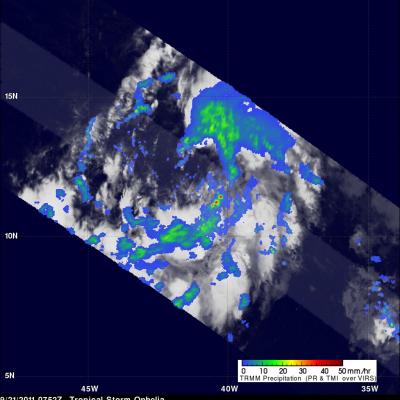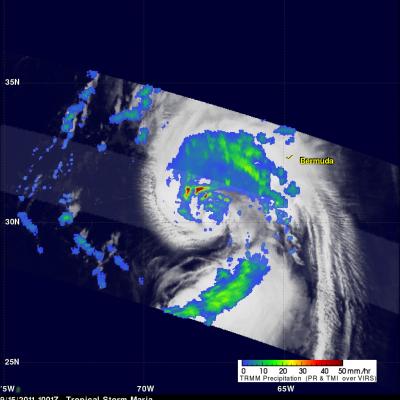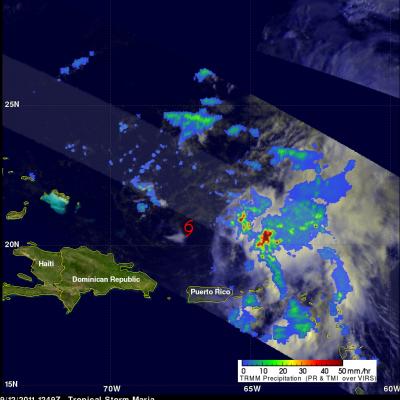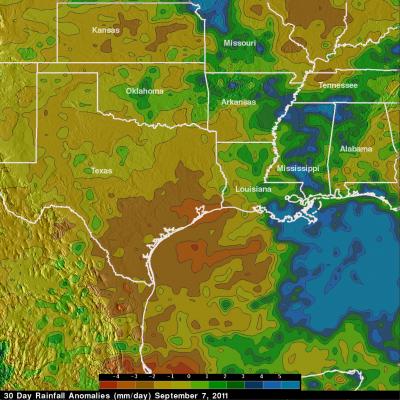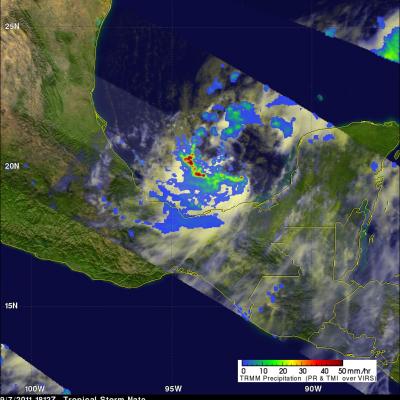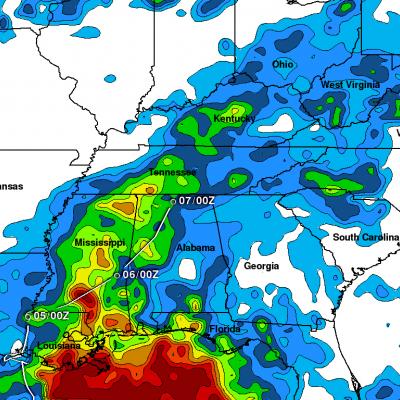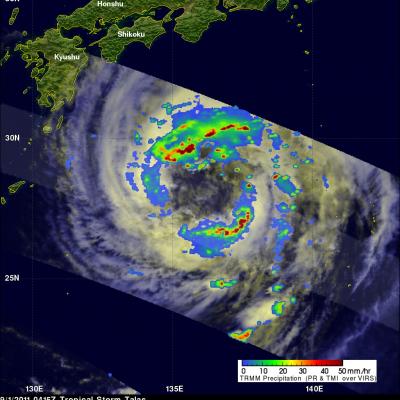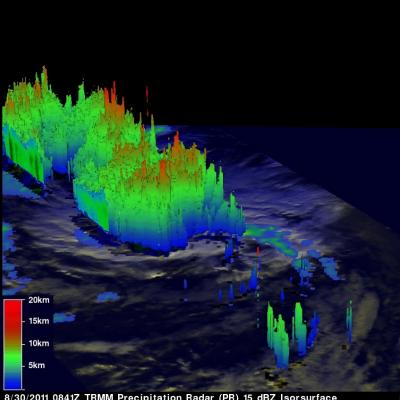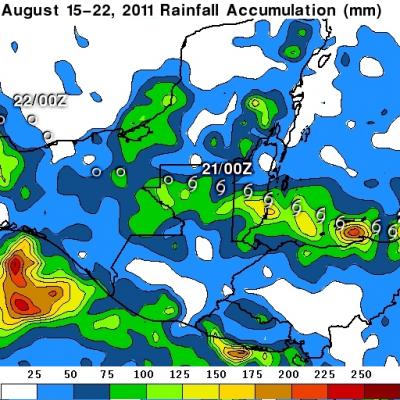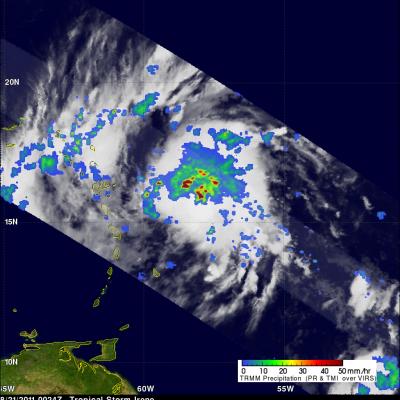Tropical Storm Ophelia Forms
The TRMM satellite passed over newly formed tropical storm Ophelia in the Atlantic Ocean on September 2011 at 0752 UTC ( 4:52 AM EDT). TRMM shows that Ophelia isn't very well organized and contains only a few scattered areas of heavy rainfall. The National Hurricane Center (NHC) has predicted that Ophelia will remain a tropical storm with wind speeds reaching a maximum of 50 kts (~58 mph).


